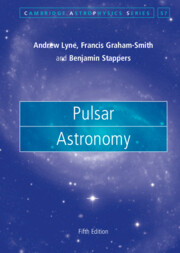Book contents
- Frontmatter
- Contents
- Preface
- Part I Discoveries and Techniques
- 1 The Discoveries
- 2 Telescope Techniques, Radio to TeV
- 3 Receiver Techniques and Data Analysis
- 4 Surveys and Population
- 5 Pulsar Timing
- 6 Timing and Astrometry of Binary Pulsars
- 7 The Distances of the Pulsars
- Part II Observed Physical Characteristics
- Part III Neutron Star Physics
- Part IV Environments and the Interstellar Medium
- References
- Index
3 - Receiver Techniques and Data Analysis
from Part I - Discoveries and Techniques
Published online by Cambridge University Press: 21 July 2022
- Frontmatter
- Contents
- Preface
- Part I Discoveries and Techniques
- 1 The Discoveries
- 2 Telescope Techniques, Radio to TeV
- 3 Receiver Techniques and Data Analysis
- 4 Surveys and Population
- 5 Pulsar Timing
- 6 Timing and Astrometry of Binary Pulsars
- 7 The Distances of the Pulsars
- Part II Observed Physical Characteristics
- Part III Neutron Star Physics
- Part IV Environments and the Interstellar Medium
- References
- Index
Summary
Digitisation of incoming signals at nanosecond intervals allows complex manipulation of radio signals to provide for simultaneous multi-beam and multi-frequency operation. The periodic signals from pulsars must be extracted from background noise, allowing for frequency dispersion in propagation through the interstellar medium.
Keywords
- Type
- Chapter
- Information
- Pulsar Astronomy , pp. 34 - 53Publisher: Cambridge University PressPrint publication year: 2022

